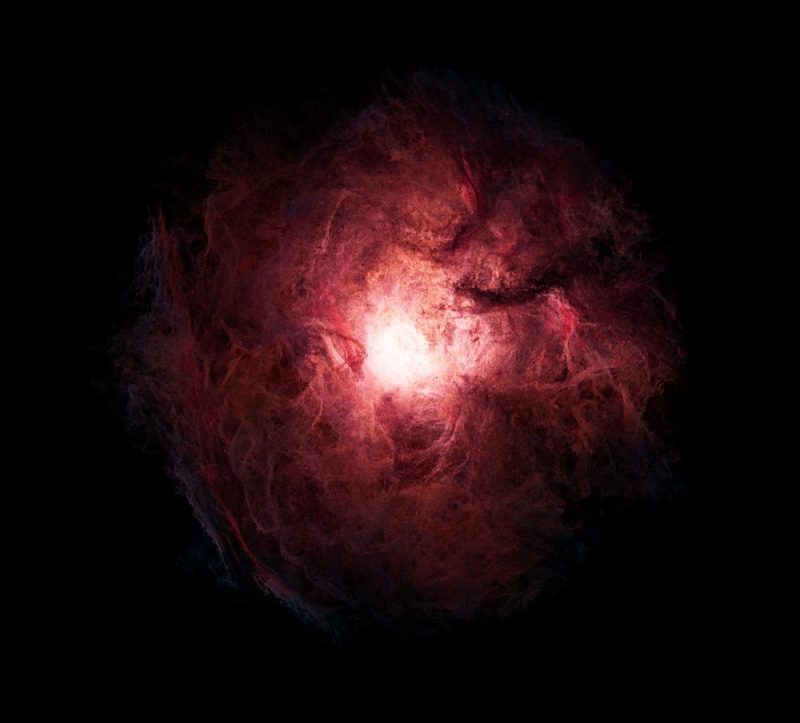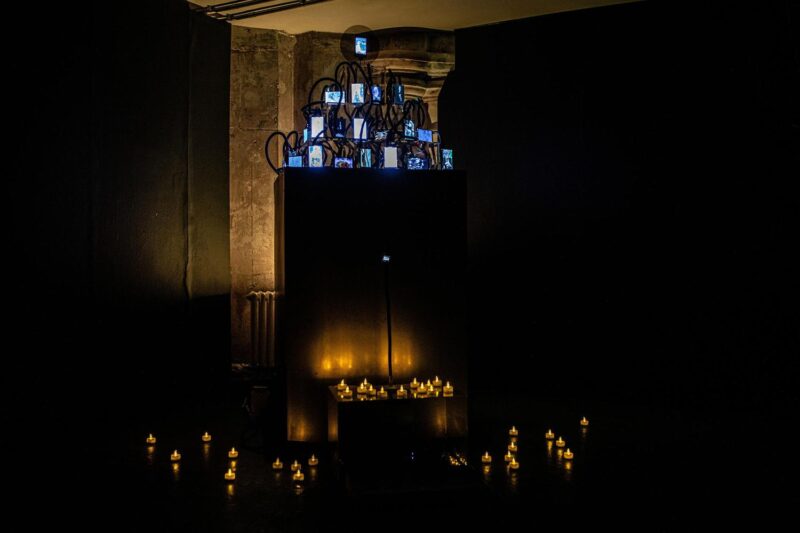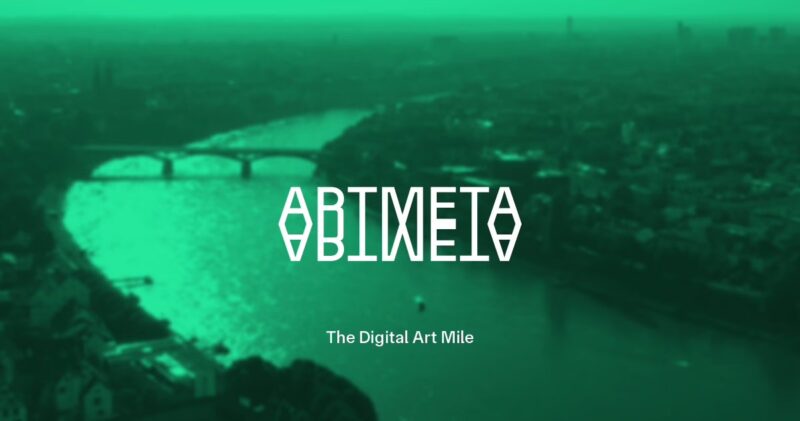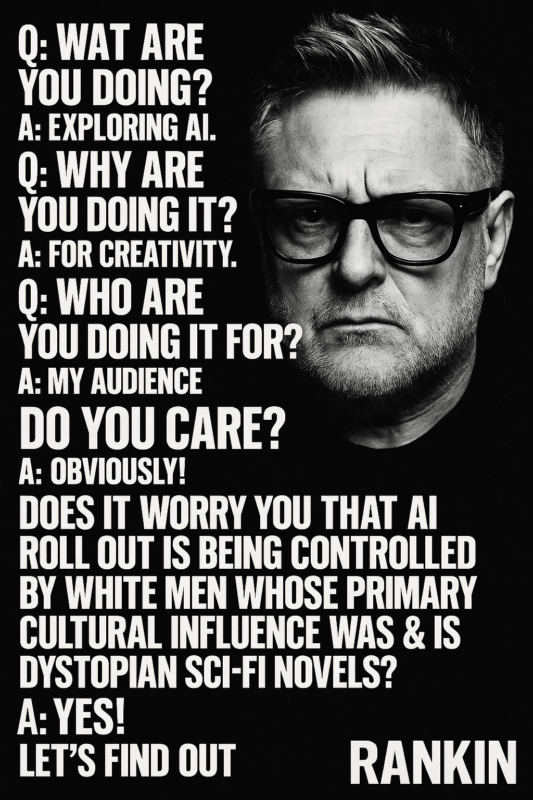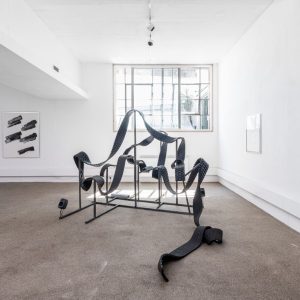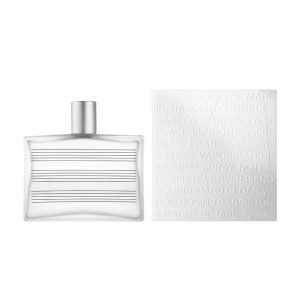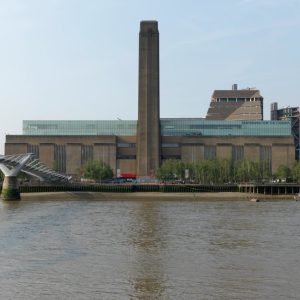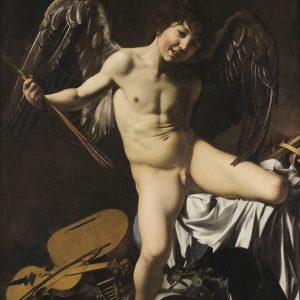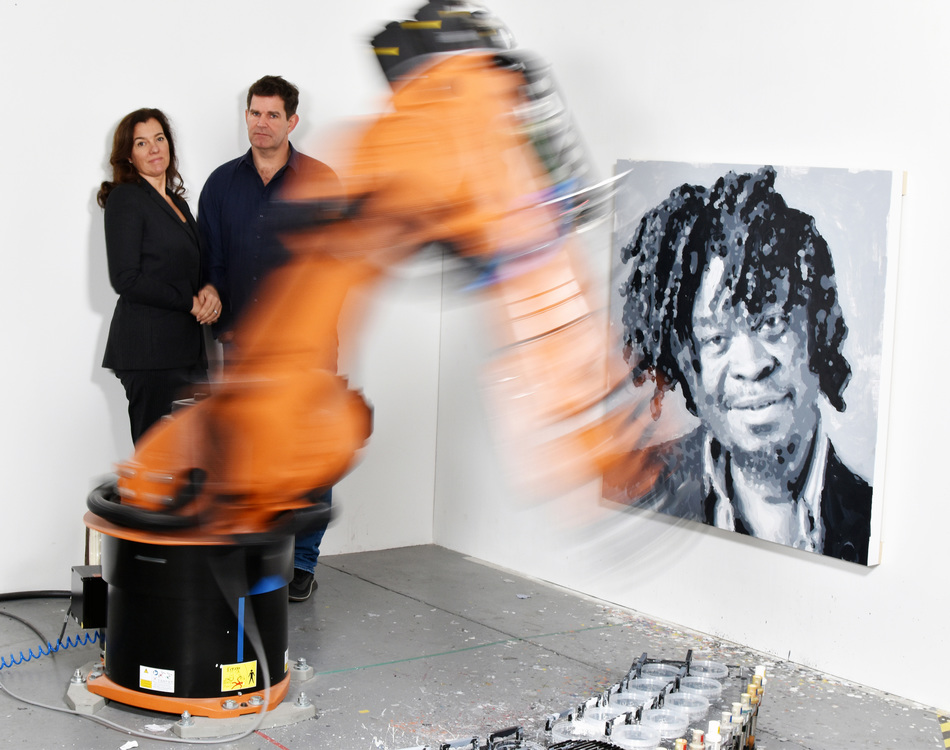
Rob and Nick Carter portrait with Yinka Shonibare Robot Painting
Rob and Nick Carter talk to Lee Sharrock about their upcoming exhibition at Ben Brown Fine Arts, which will feature a new series of AI portraits of iconic artists including; Andy Warhol, Frida Kahlo, Peter Blake and Yoko Ono.
They have even been commissioned to make an AI portrait of The Queen, which will be created by the robot on the evening of the private view. The Carters have a history of embracing new technology in their work, and with the Dark Factory Portraits they have worked with a robot arm to examine whether a machine can become an artist.
The exhibition will also feature Painters Palette, a new video work featuring several artist friends of The Carters painting in the traditional manner, to provide a contrast between art created with the human hand, and the AI-generated portraits.
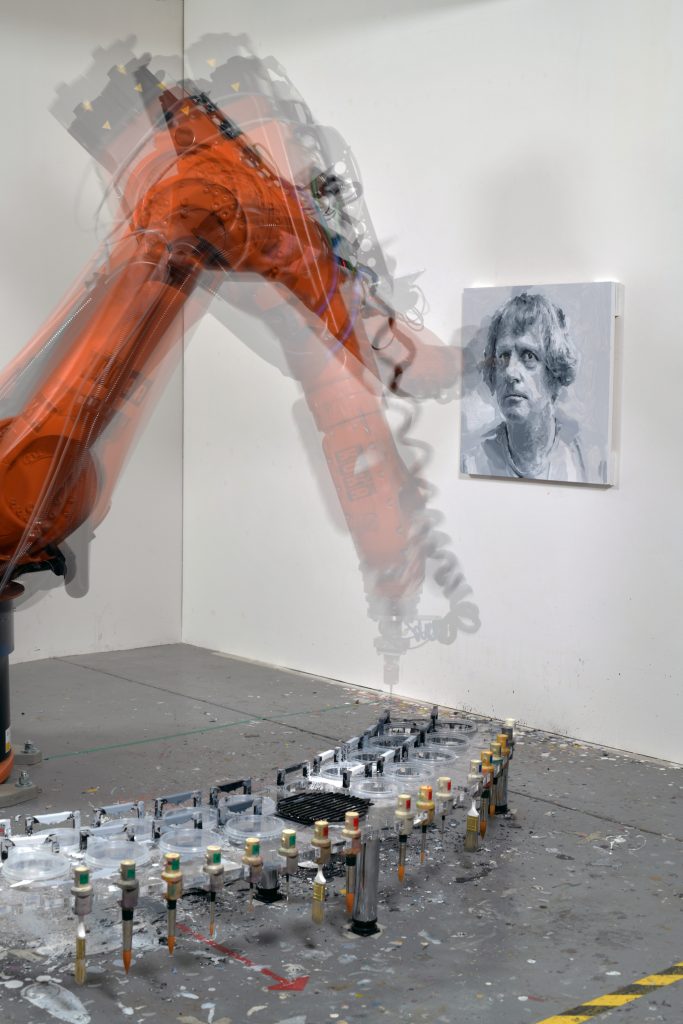
Rob & Nick Carter Robot Painting Work in Progress
Lee Sharrock: You’ve been examining and utilising technology in your artistic practice since 2013 with your animated Old Master paintings exhibited at The Fine Art Society, which interpreted Golden Age masterpieces for the digital age. Was this the beginning of a fascination with combining analogue and digital techniques, and how technology can enhance contemporary art?
Rob & Nick: Throughout history, artists have always used tools at their disposal. We have always embraced cutting edge technology whilst looking back at the past. Our Transforming series employed 3D printing and CGI technology. Robotics is very current and we naturally wanted to try and use it within our studio practice.
When did you start working on the Dark Factory Portraits, and what was the catalyst of the idea?
We were fascinated by the idea that supposedly there was only a 4 percent chance that art could be automated. We thought we would challenge that idea by teaching a huge robotic arm to paint. Our six-axis Kuka Robot which we call Heidi is modelled on a human arm as we are so well designed. Heidi feels very ‘life like’ as she moves.
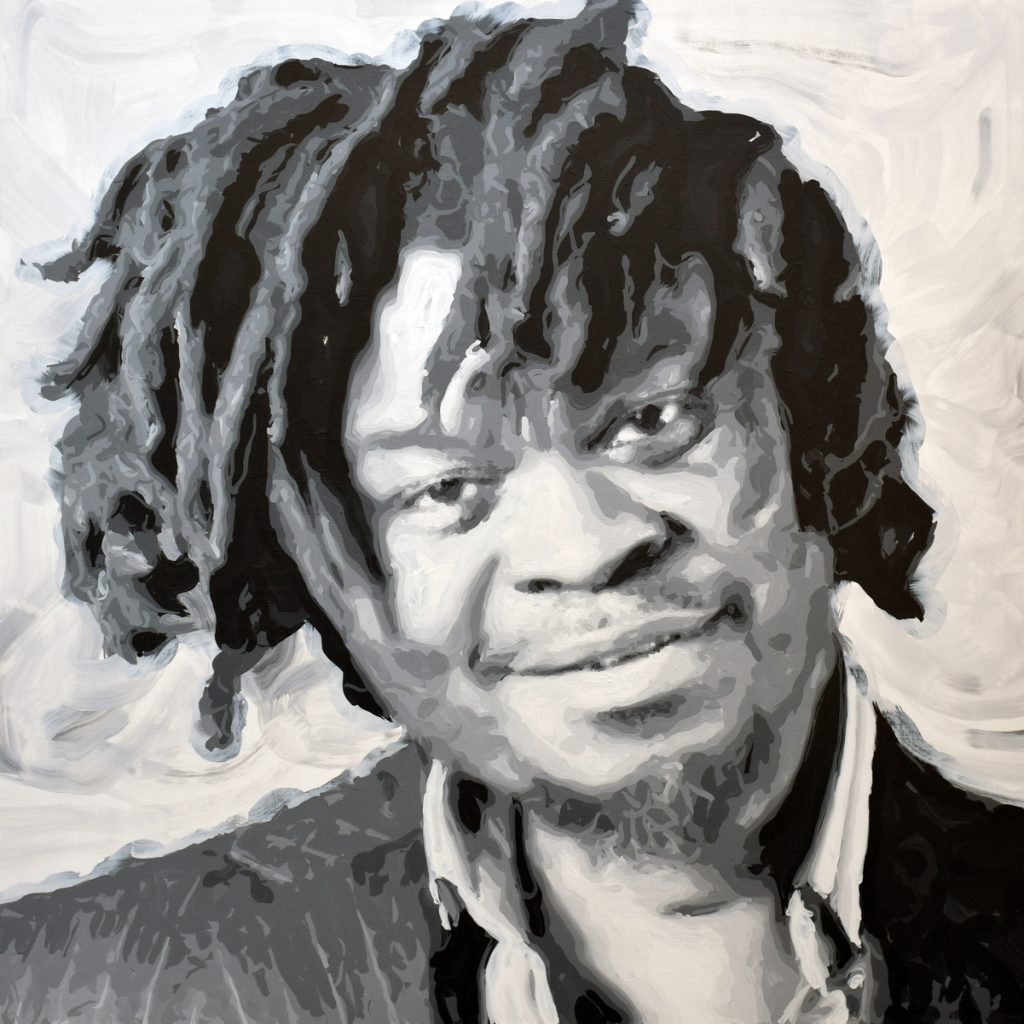
Rob & Nick Carter Robot Painting Yinka Shonibare
How did the collaboration with Ben Brown arts come about?
This will be our first solo exhibition with Ben although we have shown our Transforming film works with him over the last few years at Maastricht and Masterpiece. We have always admired the program at Ben Brown Fine Arts. He shows contemporary and beautiful old master works seamlessly alongside each other. It has a very intimate feel whilst being utterly professional. Ben Brown is a lovely person, hardworking and great fun so it works brilliantly.
The press release says that you took your exhibition title ‘Dark Factory Portraits’ from “‘lights-out manufacturing’, where factories can function in the dark because robotic systems do not need to ‘see’ what they’re doing”. Is there also an allusion in this title to Andy Warhol’s factory, and the screen-printing technique he used to produce multiple portraits of people and objects?
We loved the idea of “Painting portraits in the dark” our robot has no eyes and the idea she can paint so beautifully without seeing anything is remarkable. “Factory” in the title was also a nice fit, we like to think if Warhol were alive he’d be using robots too.
We consciously wanted to paint Andy Warhol too as we have always admired his work. We did a whole series referencing him with our Chinese whisper series where we took one of his drawings and had it copied 30 times by 30 different artists in a painting village in China. We may also explore the Andy Warhol multiples in our future work with the robot. A series of repeated paintings
How did you choose the subjects such as Yoko Ono, Frida Kahlo and Picasso – are they your personal favourite artists, or were they selected on the basis that they are some of the most iconic modern and contemporary artists?
The subjects we chose were some of our favourite artists. We also wanted a balance of male and female artists and ones sadly who are deceased and ones who are still living and are friends of ours.
Do you think that machine generated algorithms can enhance and eventually outsmart the maximum level of human creativity?
We don’t believe that robots will be able to work without the human mind telling them what to do or at least being the catalyst for an idea. Our Dark Factory Portraits exist because we tell the robot the exact style, the exact brushstrokes to paint. They are very much our work but we are using the robot as a tool. We don’t believe they will outsmart the human mind but more work in tandem together. We would like people to embrace robotics and not be afraid. We are proud to have managed to bring this technology into the context of the art world. It has taken three years and a great deal of work to make the seemingly impossible possible. At times we felt like giving up. With regard to the future we suppose we will have to wait and see what happens.
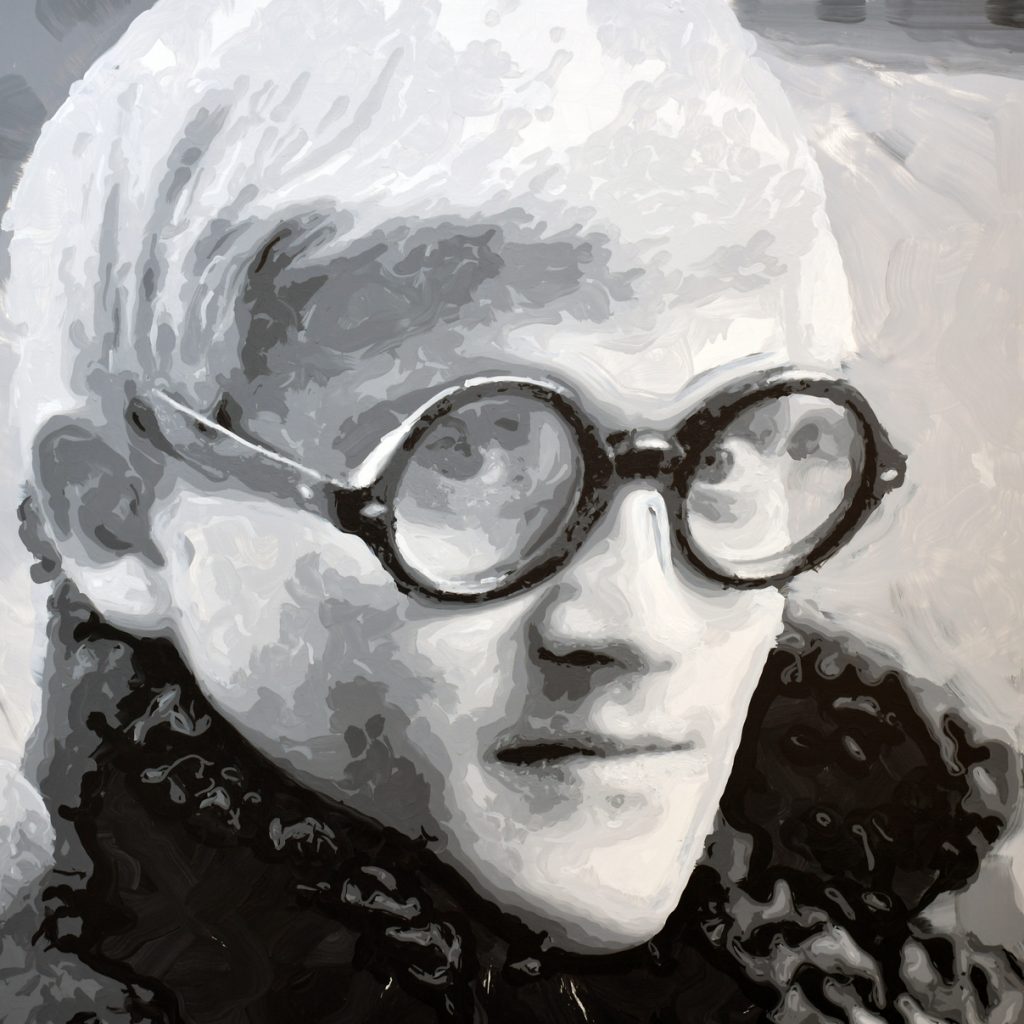
Rob & Nick Carter Robot Painting David Hockney
Your video work Painters Palette is an observation of the hands of artists working with the more traditional medium of oil, acrylic, watercolour or enamel in a purely physical way with their hands. Although this seems so far removed from AI art, do you see a linear connection between the paintings made by the robot arm and the paintings made by a human hand, in the sense that the robot is creating portraits based on a coded algorithm, and the artists also create a visual vocabulary, palette or code, that makes their work unique?
With our Dark Factory Portraits we were not trying to compete with the human hand. With our painters Palette we were celebrating the dexterity of the human hand and mind. We were fascinated watching our friends at work mixing and moving the paint from the palette to the canvas. The work is mesmerizing and hopefully quite meditative. You can almost see the artists thinking through their hands. Painters Palette, a new video work recording 12 artists’ workstations over several hours of a studio day. Filmed directly from above and with only the artists’ working hands captured in the shot, it traces the highly physical, intuitive and distinctive cadences of artistic thought in action, as they dab, mix and coax the pigments to their will. The painters work in a variety of media, ranging from oil to acrylic, watercolour and enamel, and were drawn widely from our circle of friends, including Jonathan Yeo and rising stars Flora Yukhnovich and Caroline Walker. As a counterpoint to the Dark Factory Portraits, Painters Palette is a joyful and compelling celebration of the dexterity of the human hand and the virtuosity of the brain.
How did the AI read the data presented in the photograph of each subject – did you utilize GANs (Generative adversarial networks) to create images that look like portraits of human faces? (This was the method used by French art collective Obvious to create the portrait of a fictional character Portrait of Edmond de Belamy that sold at Christie’s for close to half a million dollars in 2018)
No.
Some critics are dismissing AI art and some artists see it as a threat to more traditional methods of art production. However, this reaction to AI art could be compared to the reaction to the advent of photography in the 1830s when Fox Talbot produced the first camera less images by placing objects on paper brushed with light sensitive chloride and exposing it to sunlight. Photography revolutionised communication and culture, although some people felt it signalled the death of painting, including French artist Paul Delaroche who declared, “Painting is dead!” However in retrospect photography had a positive effect on the art world in the sense that it gave artists new opportunities and techniques to explore and develop, and led to new movements such as impressionism, Post-impressionism and Cubism, which were painterly responses to the new ways of seeing which photography enabled. Do you think AI has the potential to have a positive effect on the development of contemporary art?
Without doubt AI and Machine Learning will have a huge impact on the future of art in ways we can not begin to dream or imagine.
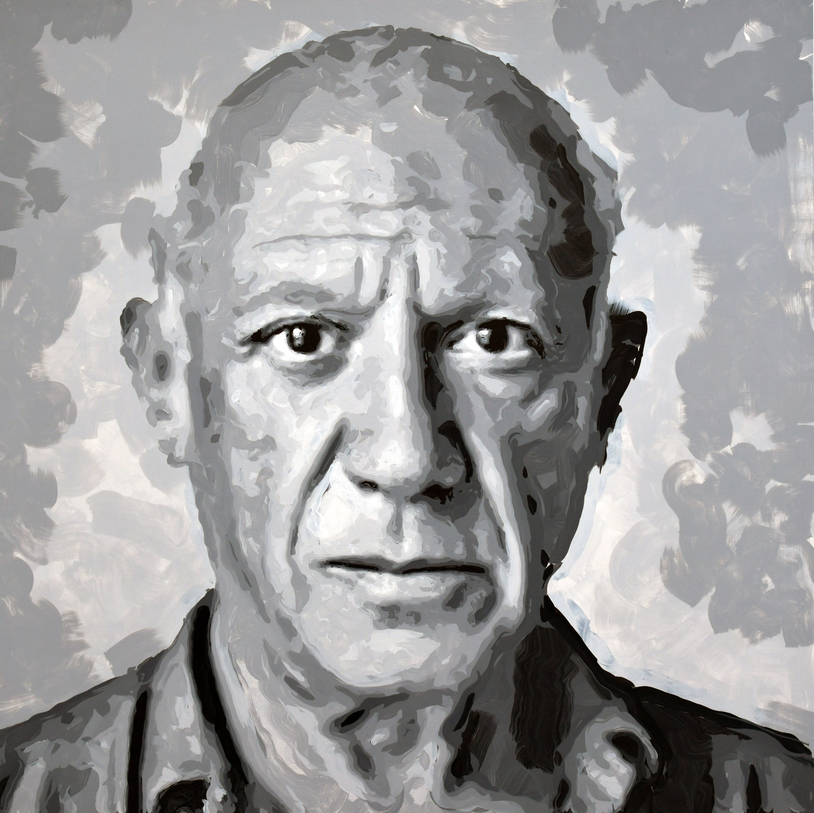
Rob & Nick Carter Robot Painting Pablo Picasso
In Walter Benjamin’s “The Work of Art in the Age of Mechanical reproduction” he said: “For the first time in world history, mechanical reproduction emancipates the work of art from its parasitical dependence on ritual. To an ever-greater degree the work of art reproduced becomes the work of art designed for reproducibility. From a photographic negative, for example, one can make any number of prints; to ask for the ‘authentic’ print makes no sense. But the instant the criterion of authenticity ceases to be applicable to artistic production, the total function of art is reversed.”
Judging by your experience with the ‘Dark Factory Portraits’, would you agree that machine-generated art or human collaborations with artificial intelligence is just the next in a series of technological developments that have enhanced the production of art. For example, printing, photography, CGI, 3D, Augmented Reality and more recently drones?
We don’t see it as any different than the caveman using mud or blood to execute their cave paintings or pop artists using found materials in their work in the 60s or the advent of photography or any other media. Artists have always used tools at their disposal as we have discussed. We were the first artists to use 3D printing in our work with our bronzes and one of the first to use CGI in our transforming works. These media have now become commonplace. It is a very natural progression for us. We look forward to seeing what is next.
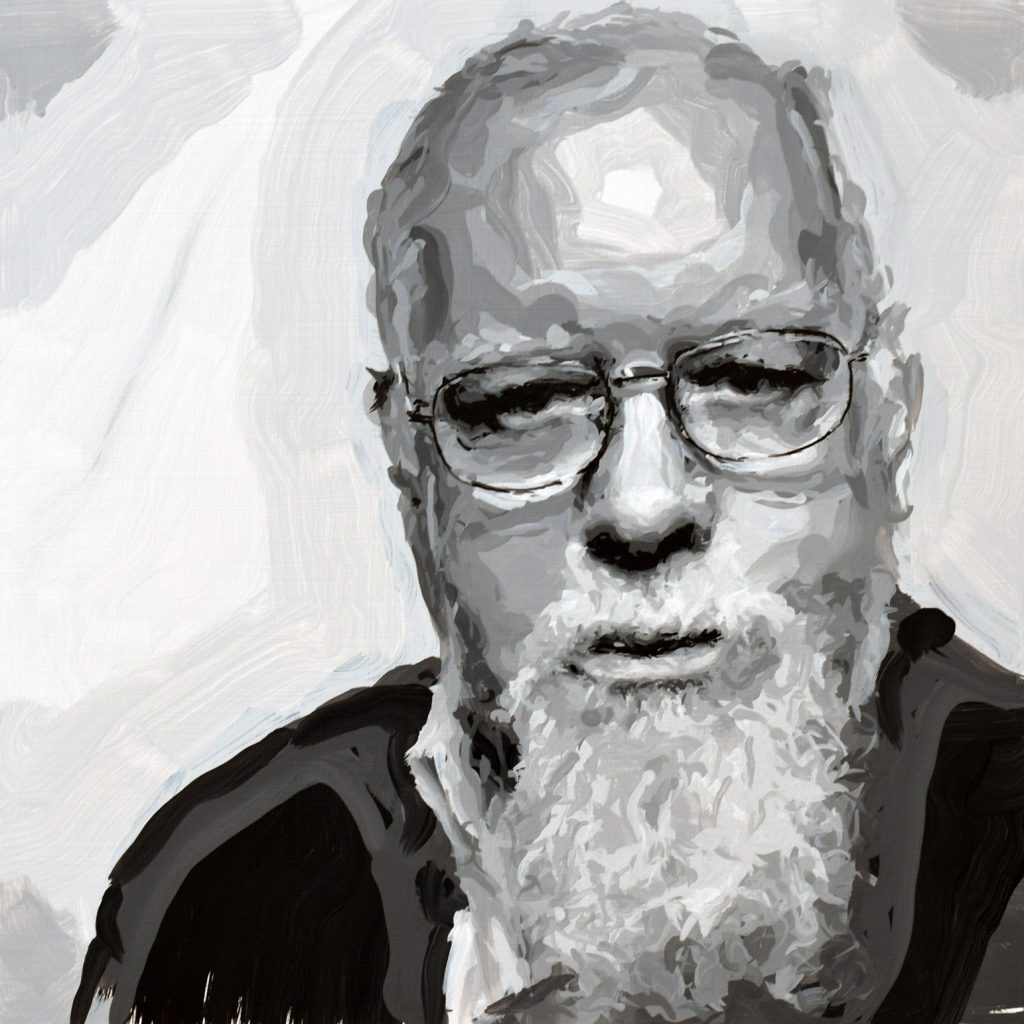
Rob & Nick Carter Peter Blake Robt Portrait
Jason Bailey, the founder of digital art blog ‘Artnome’ believes the term AI art gives a false impression of robots making art and says that: “AI art “is really a term the press came up with in the last three to five years. Most of the artists I talk to don’t like to be called AI artists. But it’s become shorthand, whether people like it or not, for the work that’s being done.”
Absolutely any new media is always open to criticism. We expect to be challenged and have mixed reviews but we are used to that. When we started our career together people in Britain were not as open about our photographic techniques and light paintings as they are now. We believe the use of robotics and AI will soon be another language within the realm of art. We are proud to be the first to paint with a robot in this way and look forward to seeing how other artists employ Ai and robotics in their work.
With your Dark Factory Portraits, what percent of the production is purely down to the robot, and what percent is the result of human beings creating codes and algorithms, which are fed to the robot?
It is far too simplistic a term we agree. It is convenient for critics to somehow use one term to ‘box it up’ neatly. Of course, it is far more complex than that. All artists use the same technology differently. Hopefully, robotics will catch on and artists and the viewer won’t be so nervous about it. We hope our audience will be intrepid and embrace the future.
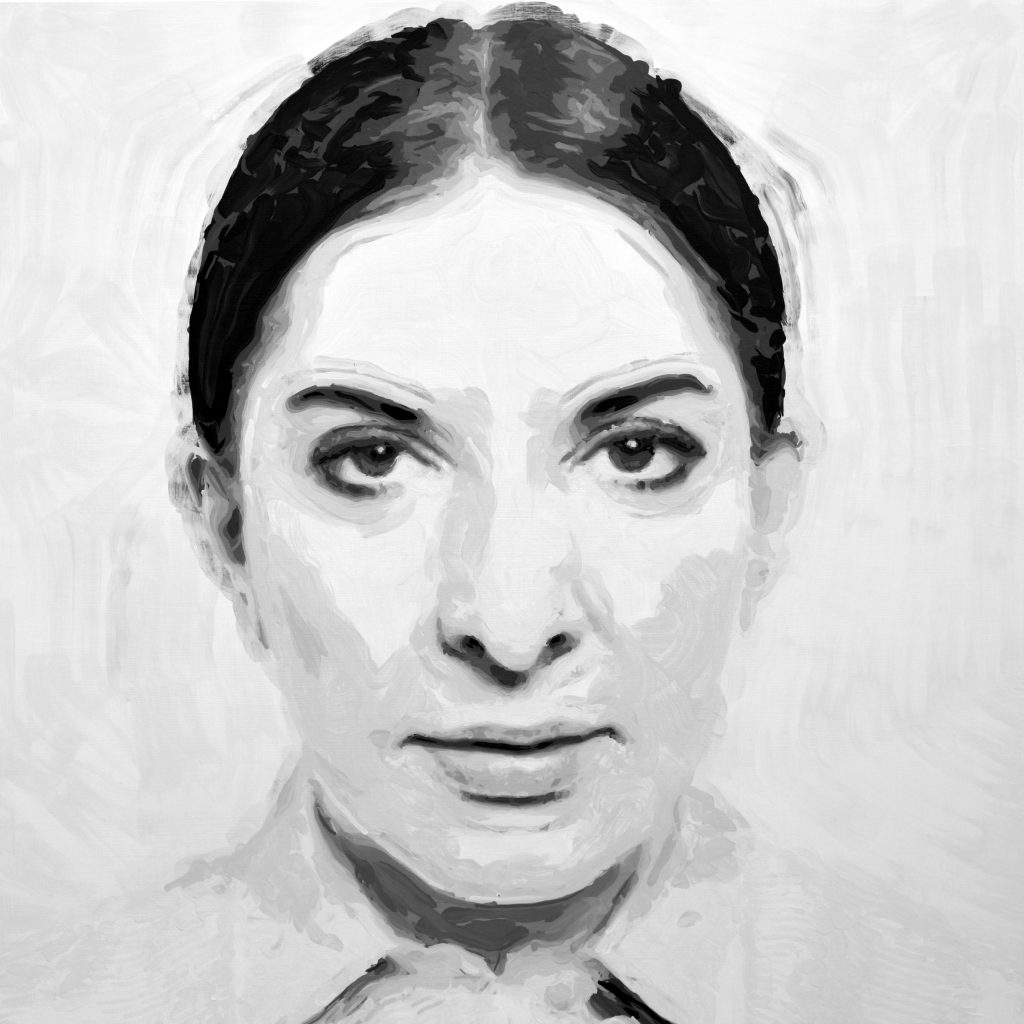
Rob & Nick Carter Marina Abramovic Robot Portrait
The Next Rembrandt was created by a computer after analysing the self-portraits painted by Rembrandt when he was alive. Did you use any similar technology?
No, we didn’t use anything like that.
The robot arm you are using to create the portraits in your exhibition looks similar to the robot featured in Sun Yuan and Peng Yu’s Can’t help myself installation in the main Giardini exhibition of the 2019 Venice biennale. An industrial robot restlessly moved red liquid around within the confines of a glass box, and the artists programmed the robot to perform 32 different movements. Is the robot you are using to create your AI portraits a similar kind of design?
Yes, it is a very similar design made by the same robotics company KUKA. We love the fact that KUKA, was started by two brothers who invented the typewriter in order to automate the written word. It somehow fits very nicely with our work.
Is the way you work together as an artistic duo enhanced by the fact that you are a married couple, or can it be difficult working professionally with your partner?
We are asked that many times. We don’t know any different as we started working together just before we got married. It does mean we never leave our work behind. We are always talking, discussing and thinking about it. We love what we do so it doesn’t feel like work. We cannot imagine retiring so long may that continue.
Rob and Nick Carter: Dark Factory Portraits is at Ben Brown Fine Arts from 12th February to 17th April:
https://www.benbrownfinearts.com/exhibitions/149/overview/
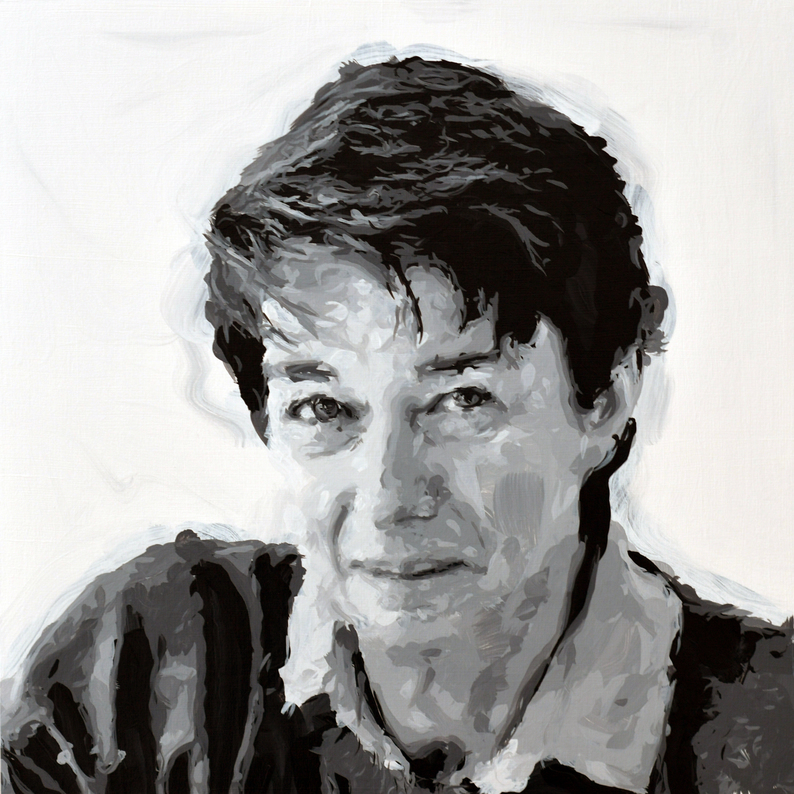
Rob & Nick Carter Robot Painting Bridget Riley
